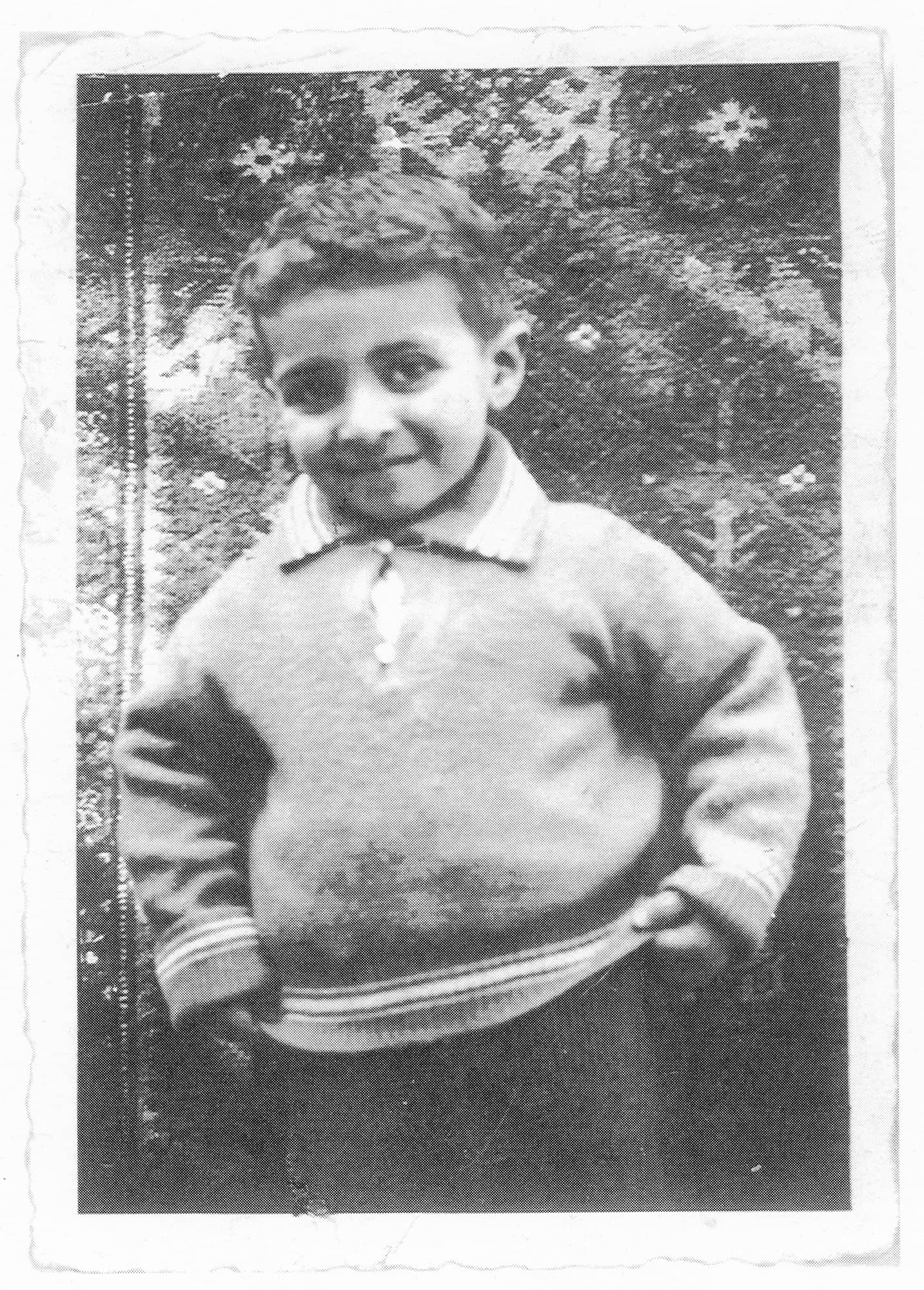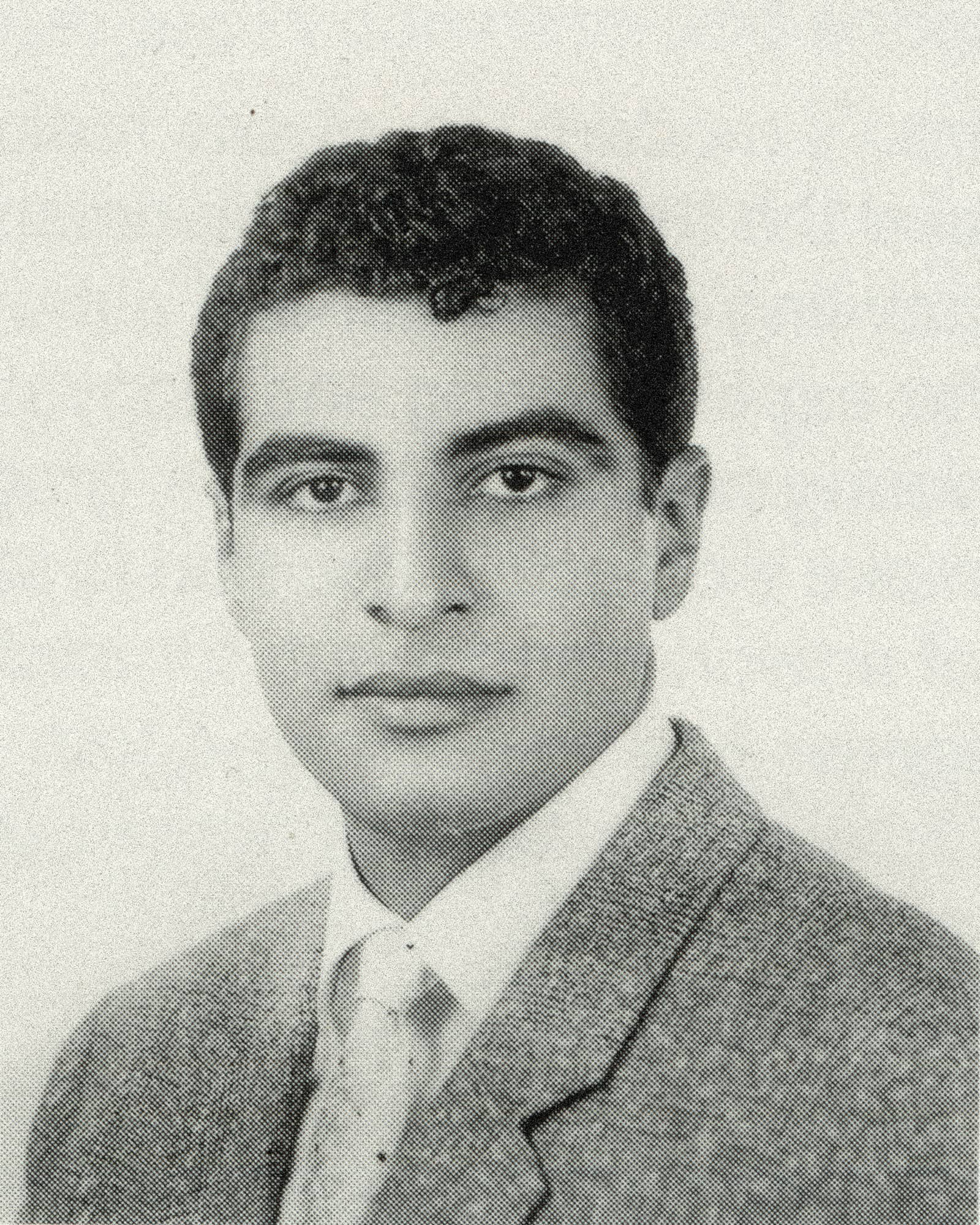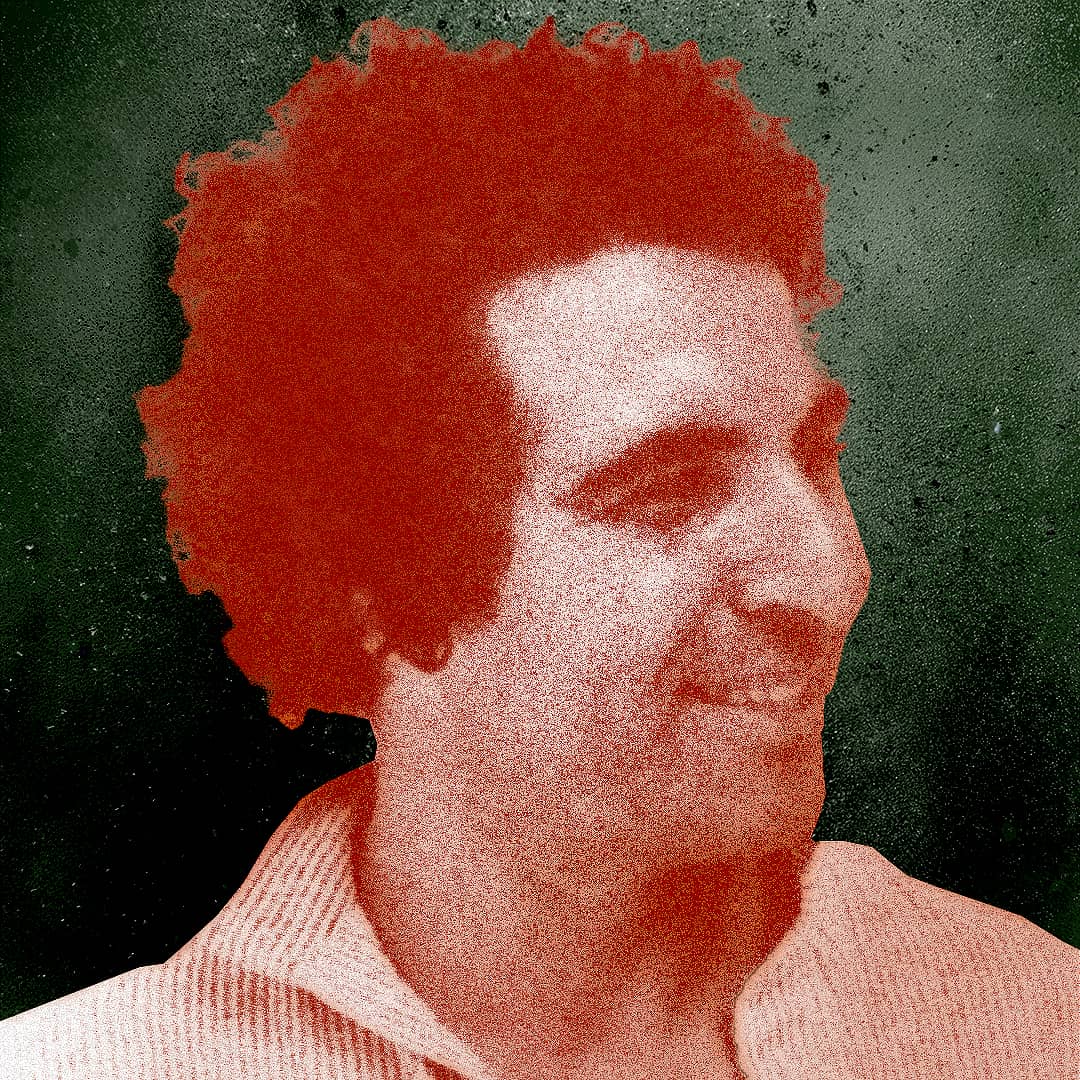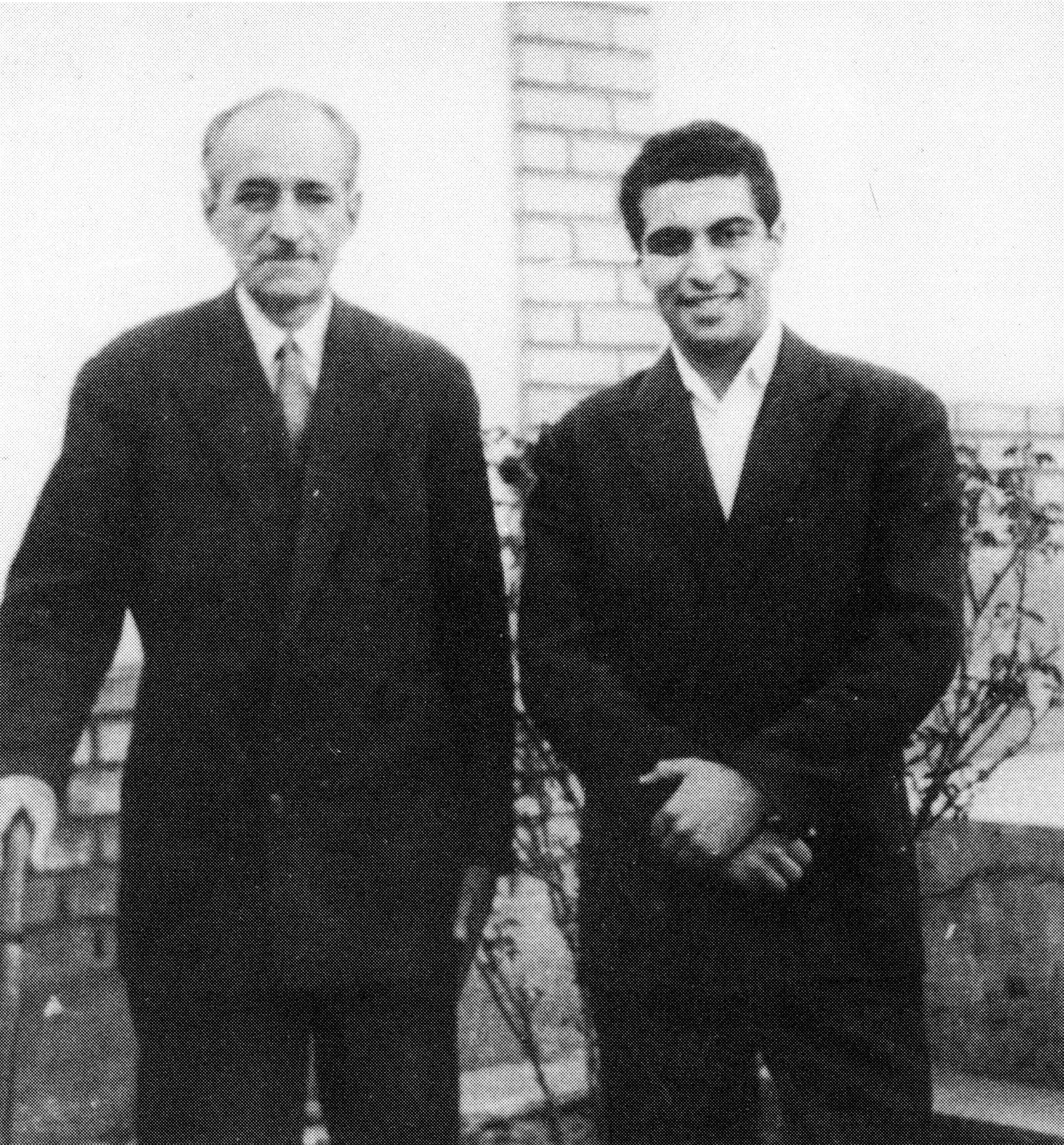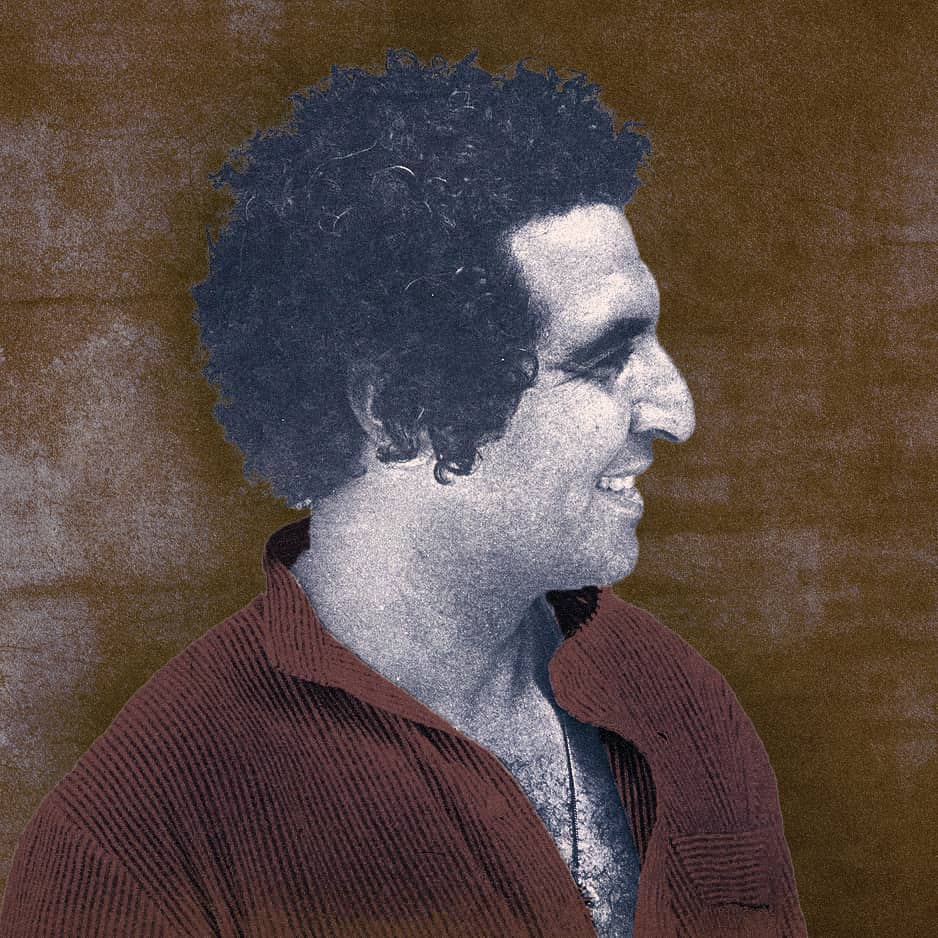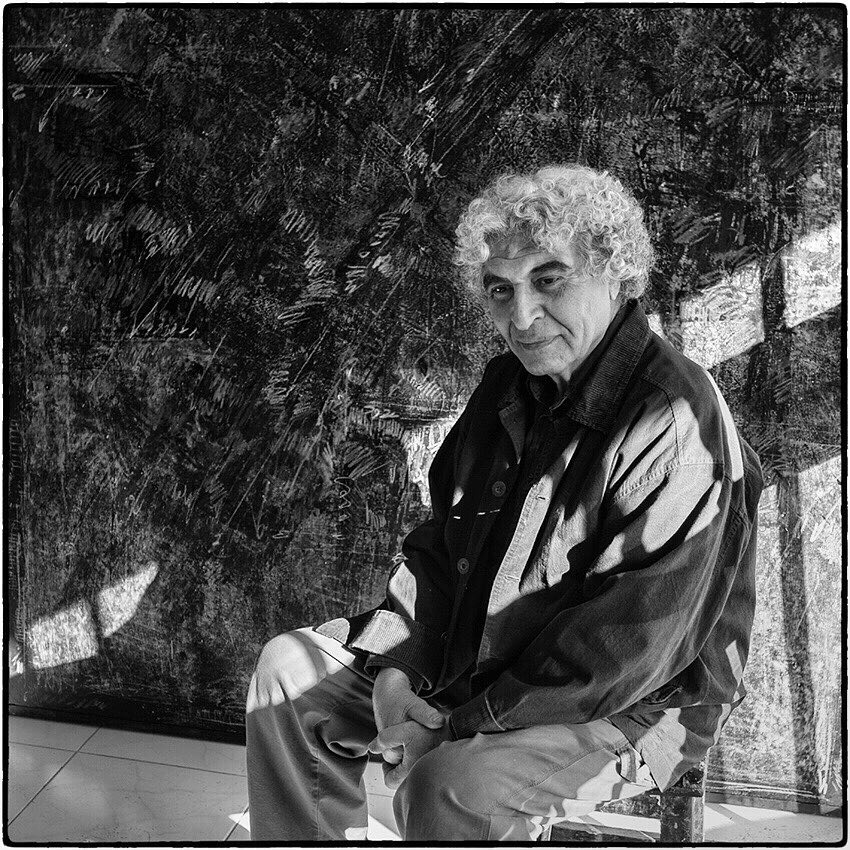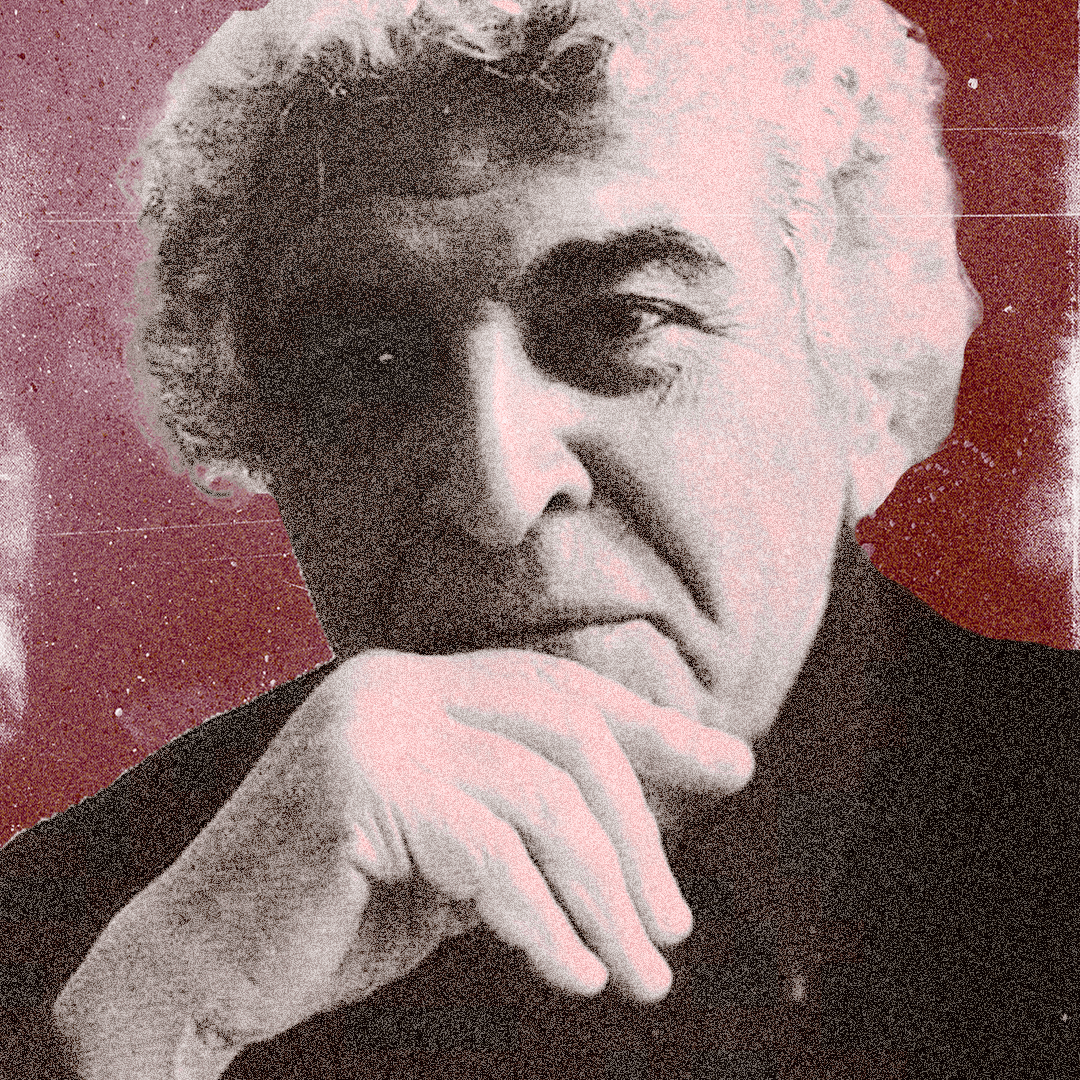Early Life and Background
(1935-1949)
Massoud Arabshahi was born in September 1935 in Tehran, Iran. His family had ancestral ties to Kahak, a small village near Isfahan, known for its historical significance as a sanctuary for Sufis and mystics during the Safavid dynasty. Growing up in a culture deeply influenced by Persian heritage, Arabshahi developed an early fascination with ancient civilizations, mythology, and traditional art forms.
During his childhood, Arabshahi spent significant time in Kahak, where he was drawn to local crafts, textiles, and architectural ornamentation. The village’s handwoven burlaps, intricate geometric patterns, and painted home decorations left a lasting impression on him. This exposure to traditional art and design would later shape his unique artistic style, which merged modern abstraction with ancient Persian and Mesopotamian symbolism.
Education and Early Artistic Training
(1949-1961)
Arabshahi formally pursued art at Tehran’s Vocational School for Boys, where he studied painting, color theory, sculpture, and human anatomy. His early work was grounded in realism, but he gradually moved toward more structured, geometric, and symbolic forms.
Between 1958 and 1961, he worked at the General Administration of Fine Arts, gaining practical experience in Iran’s evolving artistic landscape. By this time, Arabshahi had become deeply interested in the artistic heritage of Mesopotamia, Persia, and ancient Egypt, themes that would become central to his later works.
Higher Education
and the Formation of His Style
(1961-1965)
In 1961, Arabshahi enrolled in the College of Decorative Arts in Tehran, where he majored in interior design while continuing his focus on painting and sculpture. He became part of a group of young artists—including Sadegh Tabrizi, Faramarz Pilaram, and Mansour Ghandriz—who sought to revive Iranian artistic traditions through modern expression.
During this period, Arabshahi’s works featured, Ancient Iranian, Mesopotamian, and Egyptian motifs, Geometric patterns and symbolic scripts, A strong emphasis on texture and relief techniques
In 1962, he held his first solo exhibition at the Irano-Indian Cultural Society and won a prize at the Third Tehran Biennial. This marked his emergence as an important figure in the Iranian art scene.
The Saqqa-khaneh Movement and Artistic Breakthrough
(1965-1970)
Arabshahi became associated with the Saqqa-khaneh movement, an Iranian modern art school that integrated traditional Persian visual culture with contemporary art. While he shared some stylistic similarities with this movement, he was not fully aligned with its direction. He believed that true modern Iranian art should be inspired by tradition but should not rely too heavily on calligraphy and religious iconography.
Between 1965 and 1970, Arabshahi, Developed his signature textural relief style, using gypsum, metallic elements, and ancient inscriptions, Participated in the Paris Biennial (1965) and exhibited internationally, Completed a 600-square-meter relief commission for the Lion & Red Sun Organization’s auditorium in Tehran, blending art with architectural acoustics
These years established him as a leading modernist painter and sculptor in Iran.
International Recognition and Maturity
(1970-1979)
By the 1970s, Arabshahi’s works were being exhibited in Europe, the United States, and the Middle East. His artistic style evolved to incorporate, Abstract spatial compositions, Solar, cosmic, and celestial themes, Futuristic, metallic textures combined with ancient aesthetics, major exhibitions and achievements during this time included, Solo exhibitions at Seyhoun Gallery (Tehran), Solstice Gallery (Paris), and international biennials, Participation in exhibitions in the US, including the Grey Art Gallery (New York) and the Smithsonian Institution (Washington, D.C.), Public and private commissions in Iran and abroad, Arabshahi continued to experiment with large-scale architectural reliefs, further cementing his reputation as a master of integrating painting, sculpture, and design.
Post-Revolution Years
and Move to the West
(1979-1990s)
The Iranian Revolution of 1979 dramatically changed the country’s art scene. Many artists faced restrictions, and Arabshahi’s opportunities for public commissions in Iran diminished. However, he continued to paint and exhibit internationally, During the 1980s and 1990s, he, Moved between Iran and Western countries, particularly the US and Europe, Created a series of cosmic-themed works, incorporating celestial symbols, metallic hues, and abstract spatial forms, Saw renewed interest in his work from international collectors and museums, Despite political and cultural challenges, Arabshahi remained dedicated to his artistic vision, refining his fusion of ancient history and futuristic abstraction.
Later Career and Legacy
(2000-2019)
In the 2000s, Arabshahi’s work experienced a resurgence in both Iranian and global art markets. He held major exhibitions at Tehran Museum of Contemporary Art, Seyhoun Gallery (Tehran), International galleries in Dubai, London, and the USHis works became highly sought after in the Middle Eastern and global auction houses, including Christie’s and Sotheby’s.
Arabshahi’s final years were marked by, Continued exploration of mythological and cosmic themes, Large-scale public and private commissions, His growing influence on younger generations of Iranian artists
Death and Artistic Legacy
(2019)
Massoud Arabshahi passed away on September 16, 2019, at the age of 84. His death marked the loss of one of Iran’s most visionary modernist artists.
Legacy and Influence
Arabshahi’s contributions to modern art are defined by his, Integration of ancient Persian and Mesopotamian motifs into contemporary art, Innovative use of texture, relief, and metallic elements, Exploration of cosmic and futuristic themes, Influence on the modern Iranian art movement and global recognition
Today, his works are displayed in museums, private collections, and major auction houses worldwide, continuing to inspire artists, historians, and collectors alike.
Prizes
1964, Ministry of Arts and Culture Prize, 4th Tehran Biennial
1965, Mother’s Day Exhibition Prize, Tehran
1972, First Prize, Public contest for sculpture ornament at the Farah-abad Park, Tehran
1973, First Prize, Monaco International Exhibition
Exhibitions
1964, Tehran, Iran, India Artistic Center
1965, Tehran, Iran, Tehran University
1965, Paris, France, Biennial
1967, Paris, France, Galerie Solstice
1967, Paris, France, Museum of Sacred Arts
1968, U.S.A, Mobile Exhibition of Contemporary Iranian Arts
1970, Tehran, Iran, Modern Iranian Art: a Retrospective,
Iran American Society
1971, Tehran, Iran, Negar Gallery
1973, Paris, France, Grand Palais
1973, Paris, France, Galerie Guiot
1973, Monaco, France,
Monaco International Exhibition, Monte Carlo
1974, Tehran, Iran, International Exhibition of Arts
1975, Tehran, Iran, Blue, Takhte Jamshid Gallery
1975, Tehran, Iran, Volume and Environment, Iran America Society
